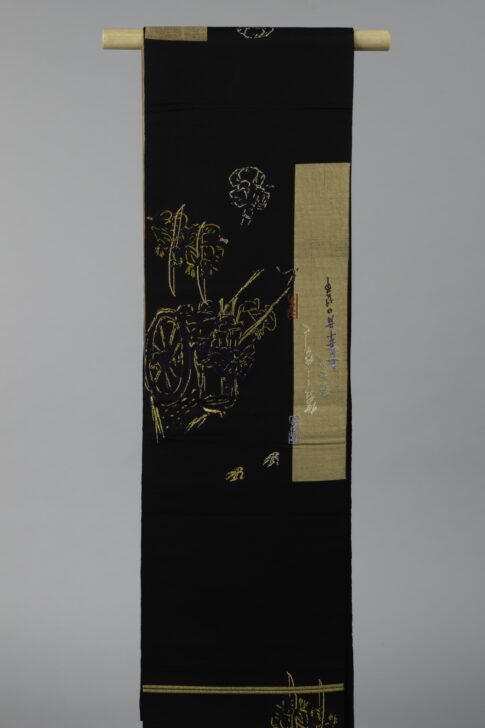Obi
Japanese

Description
Subject Matter:
This is a fukuro obi in otaiko gara.
After the late fifteenth century, oxcarts were used only for imperial ceremonies and thus came to be known as “imperial oxcarts.” This motif was often used for Kimono and obi.
Fukuro Obi is double-layered single sided obi in which two separately woven surfaces and back pieces of cloth are stitched together. This type of obi is typically only worn at weddings or other formal occasions.
Gara refers to the orientation, arrangement, and surface area of the patterns and pertains to a specific trend and obi tying style. The patterning in the Otaiko gara type is minimal. A few concentrated spots of patterned motif lie on the obi while the rest is left blank. This style was invented during the Edo period (1615-1868) by the female entertainers in Fukugawa, an entertainment district in present-day Tokyo.
Physical Description:
(obi is displayed upside down in the image)
Black fukuro (single-sided) obi with Imperial Oxcart motifs interwoven gold, violet, and red signature and contour line-drawing embroidery of a carriage, samurai, archers, swallows, kannushi (Shinto priest), and depiction of a hanging scroll of Kouzan-ji temple.
Usage Rights:
If you are interested in using an image for a publication, please visit https://umma.umich.edu/request-image/ for more information and to fill out the online Image Rights and Reproductions Request Form.